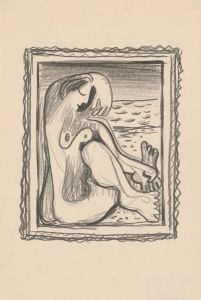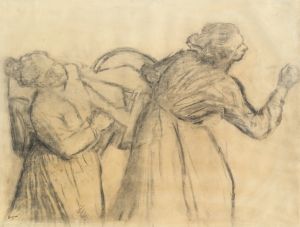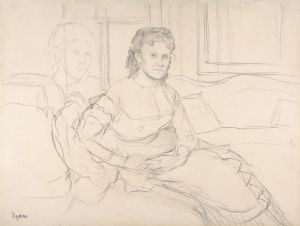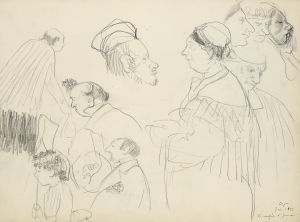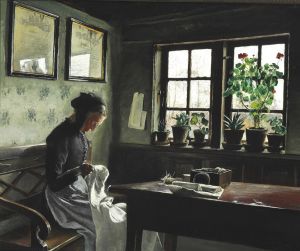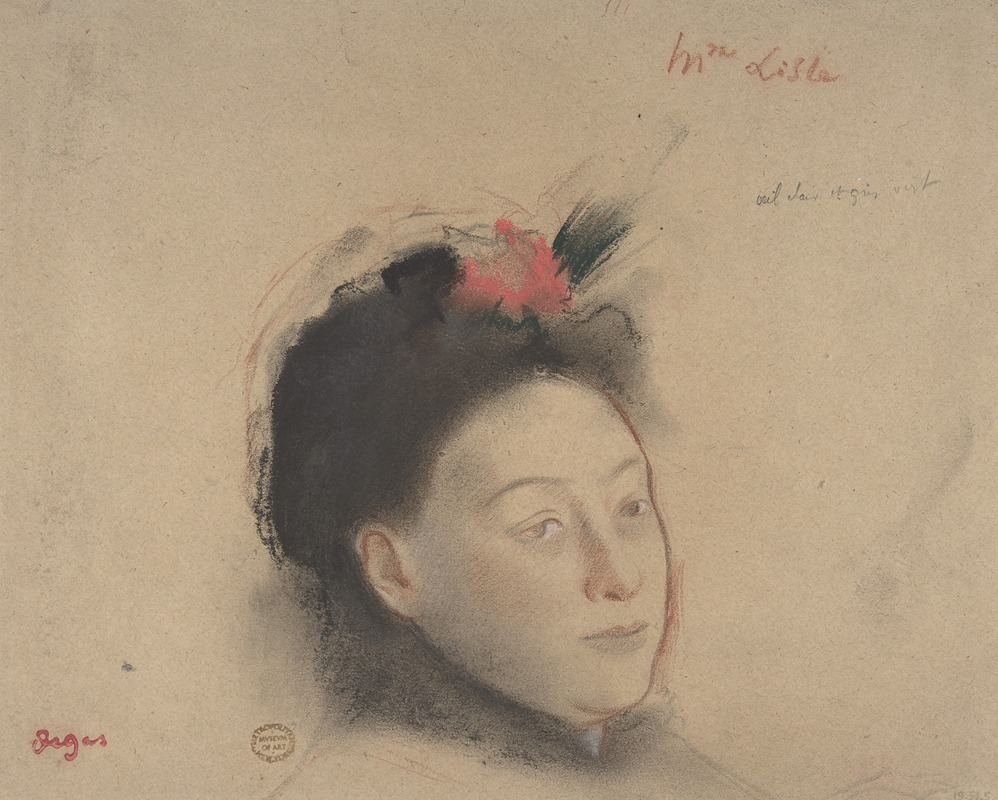
Madame Lisle
A hand-painted replica of Edgar Degas’s masterpiece Madame Lisle, meticulously crafted by professional artists to capture the true essence of the original. Each piece is created with museum-quality canvas and rare mineral pigments, carefully painted by experienced artists with delicate brushstrokes and rich, layered colors to perfectly recreate the texture of the original artwork. Unlike machine-printed reproductions, this hand-painted version brings the painting to life, infused with the artist’s emotions and skill in every stroke. Whether for personal collection or home decoration, it instantly elevates the artistic atmosphere of any space.
Edgar Degas, a prominent French artist known for his contributions to Impressionism, created a wide array of works that capture the nuances of human form and movement. Among his extensive oeuvre, "Madame Lisle" is one of his lesser-known pieces. Degas, born in 1834 in Paris, was a master of depicting modern life, and his works often focused on dancers, women at work, and scenes of urban life.
"Madame Lisle" is a portrait that reflects Degas's keen interest in capturing the essence of his subjects through meticulous attention to detail and a unique approach to composition. While specific details about the painting "Madame Lisle" are scarce, it is consistent with Degas's style during the period in which he was actively producing portraits. Degas's portraits are renowned for their psychological depth and the way they convey the personality and mood of the sitter.
Degas's technique often involved the use of pastels and oils, and he was known for his innovative use of color and light. His portraits frequently exhibit a sense of intimacy and immediacy, achieved through his careful observation and rendering of the human form. Degas had a distinctive approach to composition, often employing unconventional angles and cropping to create a sense of movement and spontaneity.
Throughout his career, Degas was associated with the Impressionist movement, although he preferred to be called a realist. His work diverged from the typical Impressionist focus on light and atmosphere, instead emphasizing line, form, and the human figure. This focus is evident in his portraits, where he often captured the subtleties of expression and posture.
Degas's portraits, including "Madame Lisle," are characterized by their ability to convey the inner life of the subject. He had a remarkable talent for capturing the individuality of his sitters, often portraying them in thoughtful or introspective poses. This ability to depict the psychological complexity of his subjects is one of the hallmarks of his portraiture.
While "Madame Lisle" may not be as widely recognized as some of Degas's other works, it nonetheless exemplifies his skill as a portraitist and his dedication to exploring the human condition through art. Degas's influence on the art world is profound, and his works continue to be celebrated for their technical mastery and emotional depth.
In summary, Edgar Degas's "Madame Lisle" is a testament to his prowess as a portrait artist, reflecting his commitment to capturing the essence of his subjects with precision and empathy. Although specific information about this particular painting is limited, it remains an integral part of Degas's legacy as a master of modern portraiture.






